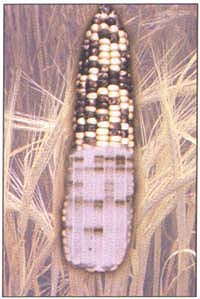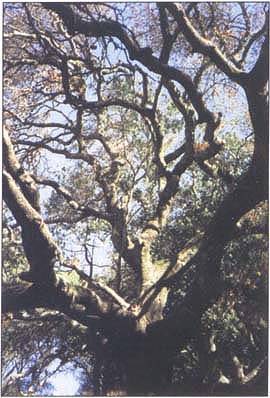All Issues
Science Brief
Publication Information
California Agriculture 55(2):5-5.
Published March 01, 2001
PDF | Citation | Permissions
Full text
“Jumping genes” aid gene delivery
Using a form of genetic hitchhiking, UC Berkeley scientists have developed a method of delivering genes in barley and other cereals in a way that could ease safety concerns and minimize the problem of “gene-silencing.”
The new method uses so-called “jumping genes” to ferry new genes around the genome of cereals like barley. The process does not use viral particles for transporting genes, nor does it rely on antibiotic-resistance screening, two methods that have raised some safety concerns.
“Our method is ready for use by plant biologists to create new varieties of cereal crops in a manner that is both very quick and very safe,” says UC Berkeley plant biologist Peggy Lemaux, who conducted the work with postdoctoral researcher Thomas Koprek and laboratory assistant Sergio Rangel.
Until now, a major challenge in genetic engineering of grains has been maintaining activity of the genes over time. Grains are surprisingly adept at stifling the implanted gene's activity, a process known as gene-silencing.
Lemaux and her colleagues devised a way to surmount this hurdle by engineering the genes to hitchhike on mobile pieces of DNA known as transposons or jumping genes. They hop from place to place inside the genome, causing, for example, the mosaic pattern seen in Indian corn, but can be stabilized after the gene is delivered to a new location.
Lemaux and UC Berkeley colleague Bob Buchanan hope to use the technique to insert genes like thioredoxin, which can help promote the degradation of certain food allergens. The technique also works in other cereal grains and is being used in a collaborative study to help boost the digestible protein content of sorghum, a major animal feed in many parts of the world.
A transposable element, or “jumping gene,” found in Indian corn was introduced into barley as a vehicle to carry a gene of choice around the genome. DNA from barley plants that contain the jumping gene was isolated and analyzed to demonstrate that it had moved from the original site of insertion, as demonstrated by the different-sized black bands in the lower part of the corn ear.
SOD spreading; new research promising
UC scientists are cautiously optimistic about an experimental chemical treatment for sudden oak death (SOD), which has ravaged tens of thousands of trees along the California coast and has recently been discovered in several additional hosts (California Agriculture, Jan-Feb 2001).
SOD has infected and killed California native coast live oak, black oak and tanoak since the late 1990s; in recent months, scientists have also found it in Shreve oak and rhododendron in Santa Cruz County, and California huckleberry at Muir Woods and Mt. Tamalpais in Marin County. Rhododendron and huckleberry are in the heath family, which is the second family of hosts recorded in California.
In addition, UC scientists isolated Phytophthora, the pathogen that causes SOD, in soil and rainwater. “These results indicate potential pathways of spread in forest ecosystems and in the nursery trade,” says UC Berkeley entomologist Andrew Storer, a board member of the California Oak Mortality Task Force.
In the first controlled greenhouse experiment on the disease, conducted between August 2000 and March 2001, experimental treatments with a product used primarily as fertilizer significantly prevented enlargement of SOD-related cankers or lesions.
In the experiment, 90 small, potted coast live oaks in Sonoma County were inoculated with one of six Phylophthora isolates. Copper sulfate, al-fosetyl, metalaxyl and phosphonate were administered by stem injections, soil drenches and topical canker treatments. Injections of at least three of the four compounds produced statistically significant reductions in canker size as compared to inoculated but untreated stems.
While phosphonate was the most promising treatment, scientists noted that the results are preliminary and would only be useful for ornamental plants.
“This is a very important data and it gives us a starting point for further tests,” says David Rizzo, UC Davis plant pathologist.






